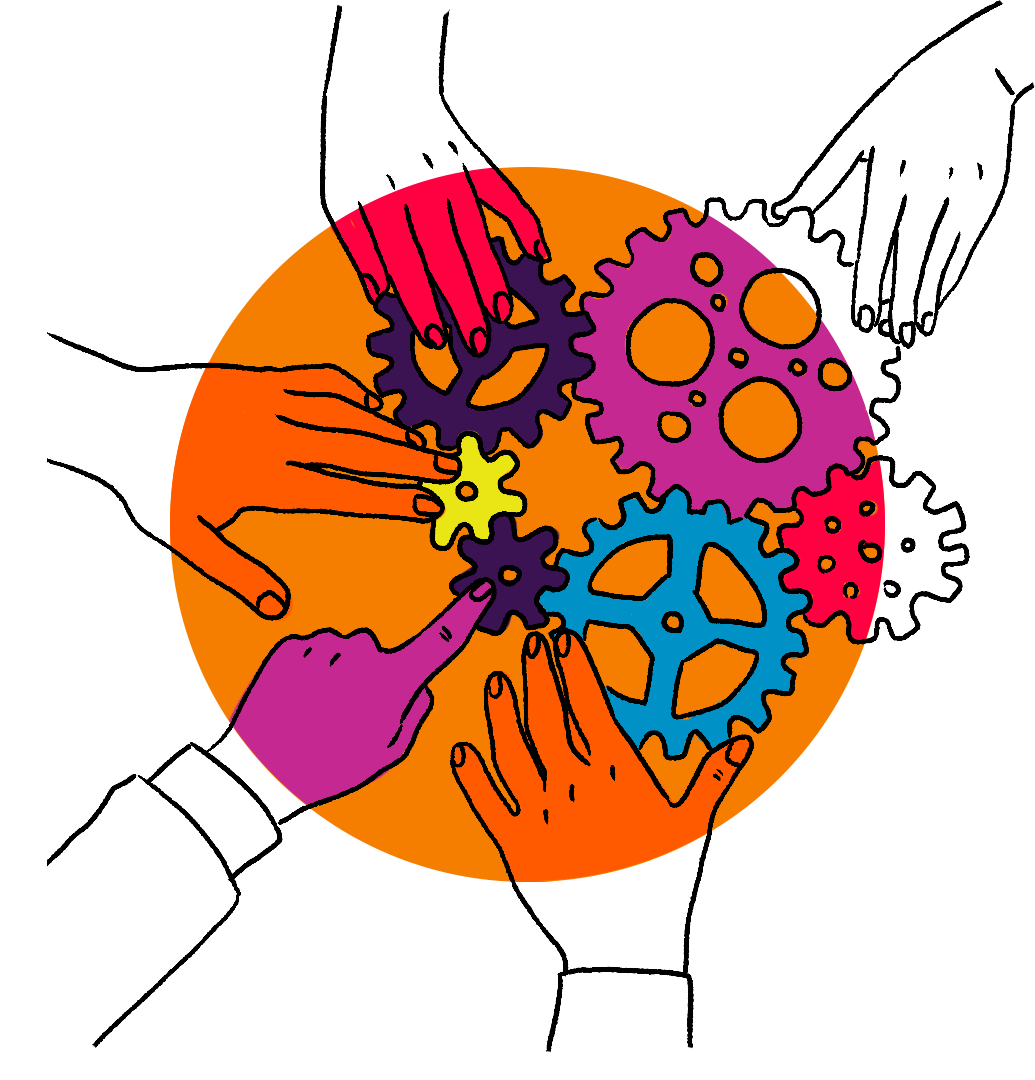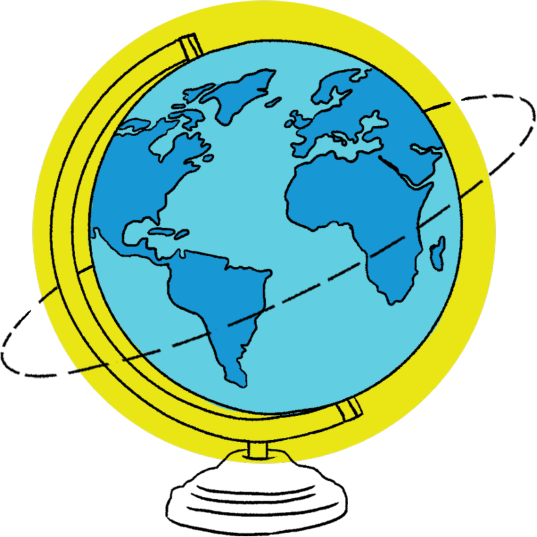This section of the report aims to highlight and celebrate the process by which innovative artists, cultural entrepreneurs and impact investors can find themselves working together collectively for the greater good of society, demonstrating the powerful and positive potential of the broader creative economy. We share stories of collaborative communities that create cultural purpose; where the development of trusting and flexible partnerships releases a variety of resources that drives creativity to mobilise capital to accomplish results.
This segment will highlight experiences that catalyse artists’ endeavours to inspire innovation; you will read about how the creative industries can contribute to the future of cities, wellbeing, migration and social cohesion; you will encounter best creative practices in facing the COVID-19 pandemic to foster long-lasting impact.
Let us introduce the model of Potrero Digital (PD), a network of collective learning centres for digital trades that aim to generate work and employment opportunities for underserved youth in the digital economy. There is no literal translation for the word Potrero in the English vocabulary, but an attempt at a definition would be that a Potrero is an abandoned land or lot in a neighborhood where children gather to play soccer. The name Potrero Digital embodies the spirit of the project because it encourages those same grown- up kids, raised playing in these lots, to combine their digital education to build a future where effort increases opportunity. The Potrero Digital community now includes some 3,100 students from vulnerable areas in the most marginal districts of Argentina, and startup operations in Brazil, Mexico, Chile and Uruguay. We understand the programme to be economically sustainable when practiced at scale. Potrero Digital’s goal, in summary, is to train young people in digital trades and to deliver opportunities in qualified employment for a segment of the population habituated to manual trades.
Potrero Digital was incubated in the Argentine National Fund for the Arts (NFA), as part of the growing in-house leadership of the Art and Social Transformation movement intended to foster digital creative skills and expand artistic opportunities. What was originally conceptualised as a film academy – together with Oscar winning film director Juan Campanella and Gaston Gorali after the success of the animated movie Metegol in 2013 – ended up becoming a digital marketing and animation training centre as a response to the increasing employment needs in the country. The NFA was an ideal launching platform, because it provided financial support for the full scope of the programme: scholarships for training and creation; grants for the nonprofit organisations that contain and bring alive Potrero Digital within their local communities; and soft loans to equip facilities and to start up artistic and digital endeavours. Following the incubation phase, Potrero Digital graduated into the supervision of Fundación Compromiso, and started scaling hubs as part of its expansion strategy. The disruption of COVID-19 accelerated progress towards a 100 per cent digital format; this situation also widened boundaries and empowered growth into more flexible structures to advantage emerging business opportunities.
Fundación Compromiso is today the non-profit organisation responsible for programme design, institutional building and financial and legal structuring. The change of state – from a public to an NGO founding partner – did not interrupt the ongoing negotiations to finance scalability. On the contrary, the whole programme was designed that way from the very beginning: the public sector as an investor, not a producer, and autonomous entities such as charities or universities as owners and producers of the new Potrero Digital.
Fundación Compromiso managed to raise the capital to provide continuity and strengthen the programme: philanthropic funding came from a group of banks, tech companies, multilateral organisations and some public funding awarded through tax incentive regulations. Smart subsidy is essential to bridge overlooked markets, because it is structured to effectively and efficiently achieve intended outcomes. Some of the local and regional controllers of philanthropic capital have come to see Potrero Digital as a meeting point for global agendas regarding youth, labour markets, education and equality. Fundación Compromiso developed the approach of using smart subsidy as a means to scale a high-potential product and as a tool to enable the participation of more commercially oriented funding. A proper system to structure grant capital can be absolutely critical to ensuring the development of the market and the achievement of outcomes.
Potrero Digital selected the path of result-oriented payments structured as professional or career investment bonds that aim to redistribute both risk and benefits. Student-centred income-share agreements are a blended path where traditional philanthropy moves towards catalytic investment; a more patient and risk-tolerant capital approach. As social initiatives emerge, they require fully non-refundable grant capital to embrace the appropriate amount of risk and develop an understanding of what works. As the initiatives develop, so do partnerships, alliances and trust-based relationships, which enable an evolution in the distribution of risk between parties, as the risk becomes more fully understood. This was established strongly by the first big philanthropist we worked with, the JPMorgan Foundation, which needed to be able to measure the cost of getting an underprivileged young person into the digital economy. One major advantage of the result-oriented strategy is the measuring of real impact, because metrics provide a common language for the evaluation of ventures in impact investors portfolios. Only projects that are able to demonstrate success, at least at some level, will be able to scale. Big creations, big intentions and big investments start with focused attention, and measurement builds the data that enhances models to scale creative impact investment.
Compromiso Digital is the social endeavour intended to direct Potrero Digital’s for-profit financial return. The model is predicated on scaling sustainability through forward contracts: future sales of digital services will provide students with the required upfront capital, which they then repay according to a pre-established schedule, contingent on sufficient earnings. Thus, capital is invested productively into the creative economy, allowing creativity to flourish and compounding economic activity. The measure of success for Potrero Digital students is employability. The animation and video games learning modules turned out to be seedbeds to discover and empower young creators and to grow the trend of freelance work – particularly beneficial in this year’s COVID-19-driven lockdowns, since the infrastructure of home working is already established. Students develop their skills through structured education at Potrero Digital and organically through a mentoring process during working experience at corporations or as freelancers. Compromiso Digital provides this pathway-oriented framework, tied to the solution of social essentials, with its corporate volunteers reinvented as coaches of the working students of Potrero Digital.
A proper system to structure grant capital can be absolutely critical to ensuring the development of the market and the achievement of outcomes
This is just one example of the broader point we aim to highlight in this section of the report: how creativity can be put to work for the benefit of individuals, communities and society, including through boosting local, national and international economies. Though the scope is inevitably limited, we have sought to represent as broad a selection of geographies and sectors as we are able, using primarily the immediate networks of Upstart Co-Lab, Nesta and Fundación Compromiso, and relying on the generous donation of time and expertise from our esteemed contributors.
In the process of developing this report, we contacted the Israeli artist Eyal Gever. Eyal integrates a collective of artists that created the project Plastivore. The artwork, which uses artificial intelligence to generate a humanitarian solution to global plastic pollution, has been selected for the 2022 Venice Biennale. Plastivore is an automated work of art using 3D printers, which consumes plastic and transmutes it into building blocks for the construction of social spaces. At the time of connecting with Eyal Gever, Fundación Compromiso was already working with the international architecture studio CAUKIN to build Potrero Digital’s first Center of Collective Learning in Barrio 31, one of the largest and most visible informal settlements in the City of Buenos Aires. Public efforts are being made in Barrio 31 to reduce poverty, improve the quality of life for residents and simultaneously lead the way for housing and urban change. Thanks to the connection made while developing this report, today we are on course to build the Potrero Digital Center with plastic blocks made by students with re-utilised waste from Barrio 31. The plastic Potrero Digital Center will be included as a case study in the artwork project Plastivore presents at the Biennale; innovation is exponential when it comes to opportunities. The Potrero Digital Center in Barrio 31 will use design programming, modelling, 3D printing and recycling for the social entrepreneurs of the community. Impact finds its way. We hope in this report you will find similar fruitful connections: ideas that will shape your own projects; creative thinkers whose work can inform your own.
Creativity at work displays strategies that combine funding and finance to support creation with purpose: people- and planet-positive impact. Creativity calls to the innovation of artists and cultural entrepreneurs; and creativity also addresses the framing of financial models that ensure social impact outcomes. Because when art meets purpose, it propels the world.








